Protein Interaction and Determination
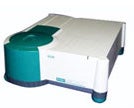
The Varian Cary 50 UV/VIS Spectrophotometer has a data collection rate of 80 points per second that can be optimally utilized to acquire information for kinetics assays. This unit features a maximum scan rate of 24, 000 nm per minute and a scan range for 190-1100 that can be completed in less than 3 seconds. The use of a Xenon lamp which flashes only when acquiring a data point minimizes the degradation of photosensitive samples, and as the Xenon lamp is intense, a beam splitter can be used with the loss in energy and allows for simultaneous beam correction.

Reichert SR7000 Surface Plasmon Resonance spectrometer is designed for label-free, real-time detection of molecular interactions with nano to micro to macro applications. This instrument monitors surface plasmon resonance (SPR) and offers critical angle capability, and monitors response versus reflectivity data. This Reichart SPR has a high thermal conductivity, works in a temperature range of 10 °C to 90 °C, is easily programmable and can has kinetic capability over a broad temperature range. This system has been automated with the addition of a Themofinnagen Surveyor Auto Sampler and Pump.
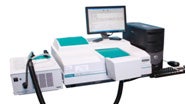
The Varian Cary UV-Vis Spectrophotometer is an instrument that utilizes the visible and UV portion (190 nm to ~900nm) of the electromagnetic spectrum to monitor the electronic transitions of molecules as the monitoring of absorption peaks can be correlated with the types of bonds and valuable in determining the functional groups within a molecule. This spectrophotometer is equipped with a Petlier-thermostatted mulitcell sample transport, a temperature controller, an extended sample compartment, Cary UVWin Bio software, and includes a variety of modules: Simple and Advanced Reads module, Concentration and Kinetics modules, Enzyme and Scanning modules, and RNA/DNA and renaturation modules, a self-contained unit which drives Peltier heating in the thermostable accessory which is attached and regulated by a built-in radiator with circulating water.
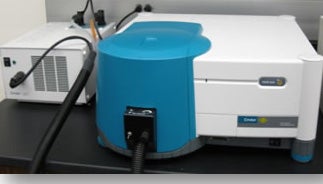
The Cary Eclipse Fluorescence Spectrophotometer uses a Xenon flash lamp for superior sensitivity, high signal-to-noise, and fast kinetics. It measures the emission of light from samples in four modes. Using Xenon lamp technology, it captures a data point every 12.5 ms and scans at 24,000 nm/min without peak shifts. The Cary Eclipse is the only spectrophotometer with room light immunity. With an optional microplate reader, it offers full wavelength scanning of 384 samples.

The Biotek SynergyMx is a flexible and easy to use monochromator-based multi-mode microplate reader with fluorescence, absorbance and luminescence detections modes. The monochromatic optics can select any UV-Visible wavelength in 1nm increments.
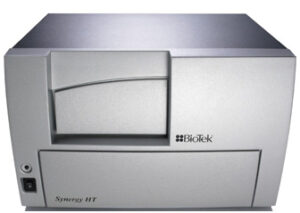
The BioTek Synergy™ HT Multi-Mode Microplate reader designed with a dual optics design for fluorescence, absorbance and luminescence measurements. With a tungsten halogen lamp, this unit provides constant intensity, increased sensitivity and repeatability. This system has the ability to use filters with different bandpasses which allows the investigator to tailor their fluorescence measurements to their experiment more effectively.
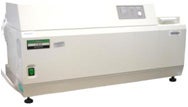
The Jasco J-810 spectropolarimeter is a hybrid instrument consisting of a variable wavelength polarimeter and absorption spectrophotometer. It is designed to allow secondary structure determination by circular dichroism; specifically measuring the left-and right-handed circularly polarized light of optically active molecules. It is equipped with a thermoelectric type temperature control system and flo-through HPLC cell. The instrument is controlled by Jasco’s Spectra Manager software.
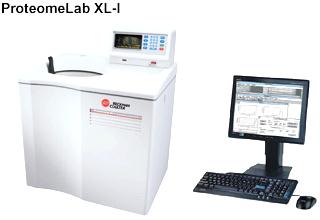
The ProteomeLab/XL-I analytical ultracentrifuge measures the relative change in the distribution of molecular weights, providing an efficient way to measure heterogeneity, stoichiometry, and self-associating systems. It is designed for the in-solution characterization of proteins, oligomers, aggregates, particles, colloids, and small structures. The wide range of rotational velocities also allows investigators to probe protein size, dimerization, and binding constants. Sedimentation velocity experiments are utilized to determine protein molecular weight and identify degree of dimerization and sedimentation equilibrium experiments are utilized to determine binding constants.